17.05.2025
NASAs PUNCH spacecraft see a cosmic rainbow in the zodiacal light
These images feature zodiacal light — the faint, diffuse glow created by sunlight scattering off dust particles in orbit.
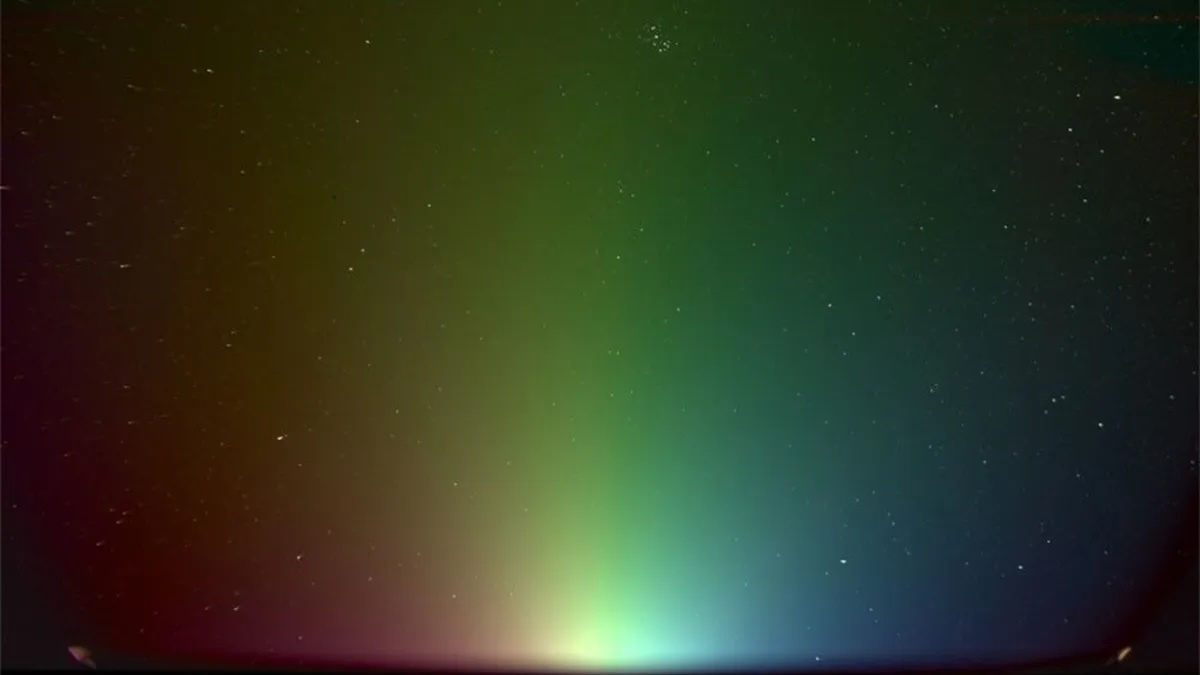
On April 18, 2025, the WFI-2 instrument on NASA's four new PUNCH spacecraft took images through all three of its polarizers in succession for the first time to create this view. The image is colorized to show the polarization (or angle) of the zodiacal light, a faint glow from dust orbiting the sun. (Image credit: NASA/SwRI)
NASA's newest spacecraft aimed at studying the sun have captured a colorful "rainbow" in the warm glow of zodiacal light observed above Earth.
The PUNCH (Polarimeter to Unify the Corona and Heliosphere) mission, which launched on March 11, consists of four small satellites working in unison in low Earth orbit to provide a comprehensive view of the sun's corona, or outer atmosphere, and study the constant stream of charged particles emitted by the sun known as solar wind.
The mission delivered its first set of images, including a vivid, rainbow-colored view of the sky, according to a statement from NASA that shared PUNCH's latest images.
These images feature zodiacal light — the faint, diffuse glow created by sunlight scattering off dust particles in space. In one view captured by the PUNCH mission's WFI-2 instrument on April 18, a hazy glow transitions from red on the left to green in the center and blue on the right, set against a backdrop of stars.
The coloration of light in this image does not depict a true optical rainbow as would be seen by the naked eye, but rather a colored representation of different wavelengths of light that highlight the instrument's capability to analyze various components of the solar atmosphere.
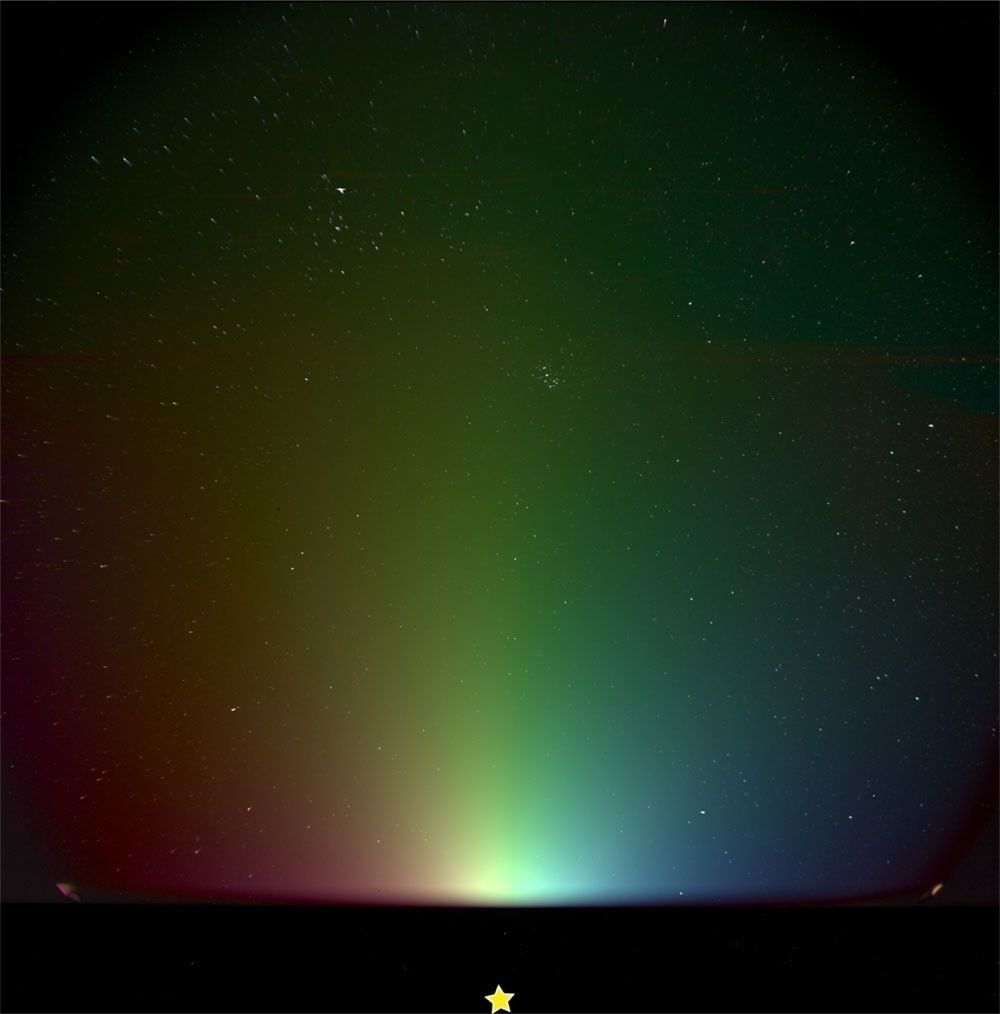
The mission measures the corona and solar wind in three dimensions by studying the polarization of light, which is the direction light travels after it has been scattered by particles. The four satellites include one Narrow Field Imager (NFI), which blocks out the bright light from the sun to better see details in the corona.
On April 27, the NFI instrument captured the new moon as it passed by the sun, using its occulter (an object that blocks a direct view of the sun) to hide the solar disk. These early images help the PUNCH mission team calibrate the instruments and ensure they are working as expected.
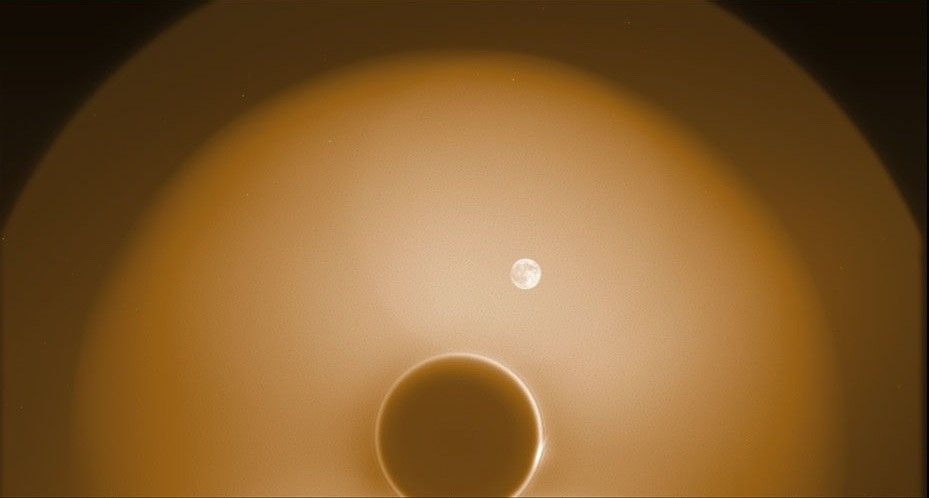
PUNCH's NFI instrument caught this image of the new moon as it passed by the sun in the sky while NFI was being commissioned on April 27, 2025. The new moon appears full in this image because it is illuminated by Earthshine, sunlight that is reflected onto the moon from Earth. The image helped PUNCH scientists confirm that the moon will not obscure NFI's view of the corona and solar wind. The dark circle near the bottom is the shadow of NFI's occulter, which hides the sun.
The PUNCH spacecraft also include three Wide Field Imagers (WFIs), which are designed to see the very faint, outermost portion of the corona and solar wind. The WFI-1 and WFI-3 instruments also captured the soft glow of zodiacal light on April 16, with the Hyades and Pleiades star clusters and Andromeda galaxy in view.
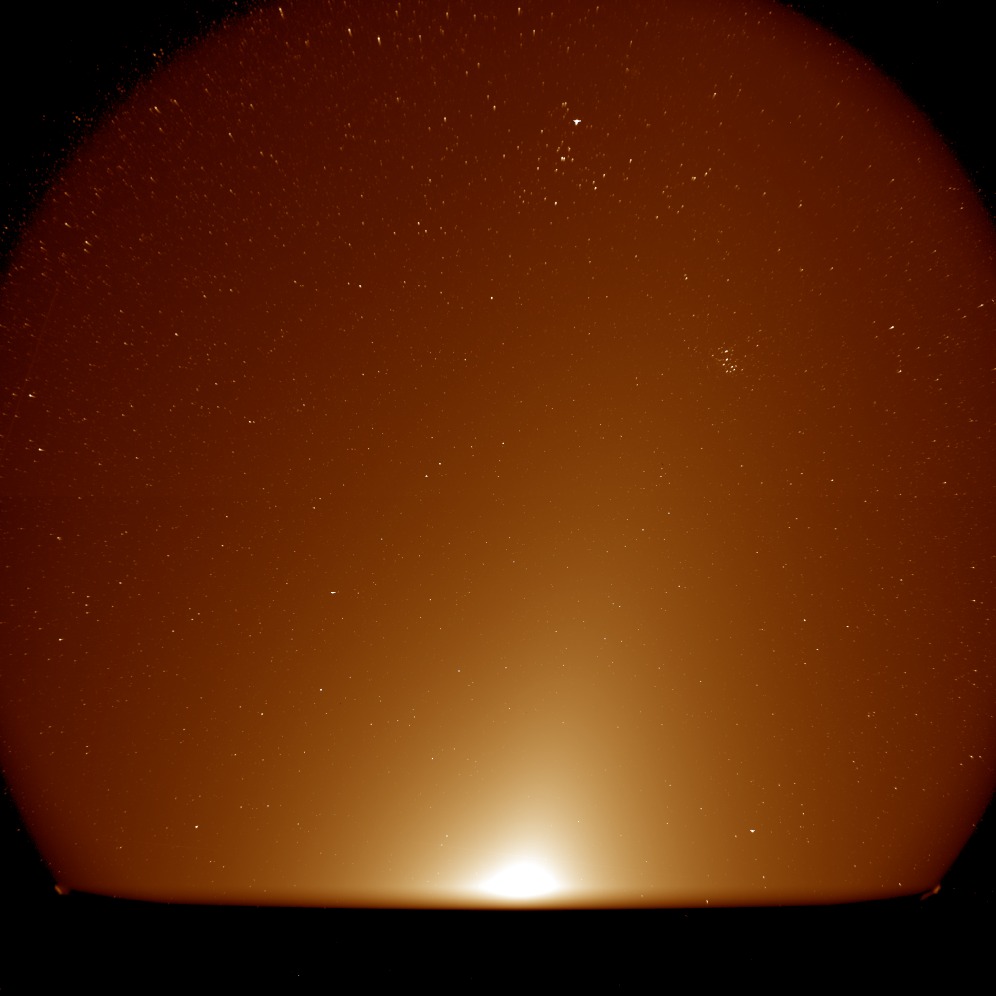
The Andromeda galaxy can be seen as a faint wispy spiral on the far right of the image below. The 'W' shape of the Cassiopeia constellation can be made out at the top. The familiar Pleiades can be seen at the left side of the image.
PUNCH launched on March 12, 2025atop a SpaceX Falcon 9 rocket from Vandenberg Space Force Base in California. Riding alongside the four PUNCH satellites was another new NASA spacecraft, called SPHEREx.
Like the James Webb Space Telescope, SPHEREx — which stands for Spectro-Photometer for the History of the Universe, Epoch of Reionization and Ices Explorer — peers into the cosmos with infrared eyes. Unlike the James Webb Space Telescope, however, SPHEREx is designed to take in a wide view of the universe in order to create a new map of the visible sky.
"We are literally mapping the entire celestial sky in 102 infrared colors for the first time in humanity's history," Nicky Fox, associate administrator for NASA's Science Mission Directorate, said during a conference about SPHEREx on Jan. 31.
Quelle: SC
----
Update: 12.06.2025
.
NASA’s PUNCH Releases Its First Images of Huge Eruptions from Sun
NASA’s PUNCH (Polarimeter to Unify the Corona and Heliosphere) mission has released its first images of large solar eruptions called coronal mass ejections, or CMEs. The images were presented Tuesday at the 246th American Astronomical Society meeting in Anchorage, Alaska.
The images, stitched into a video, show giant CMEs, growing as they travel across the inner solar system. The mission’s highly sensitive, wide-field instruments were able to capture the whole CMEs, as they evolved in space, in much greater detail than previously possible. This big-picture view is essential to helping scientists better understand and predict space weather, which is driven by CMEs and can disrupt communications, endanger satellites, and create auroras at Earth.
The series of new images also show Venus, Jupiter, several constellations including Orion, and the Pleiades star cluster. The Moon can also be seen in the sequence of images.
The images were taken with PUNCH’s four cameras, which work together as a single “virtual instrument.” Three Wide Field Imagers, which observe the faint, outermost portion of the Sun’s atmosphere and solar wind (the continual stream of charged particles from the Sun), work with a Narrow Field Imager (NFI), a coronagraph which allows scientists to see details in the Sun’s atmosphere by blocking out the bright light of the Sun itself. A still image from NFI reveals the intricate, detailed structure of a CME departing the Sun on June 3. The four cameras are hosted across PUNCH’s four satellites.
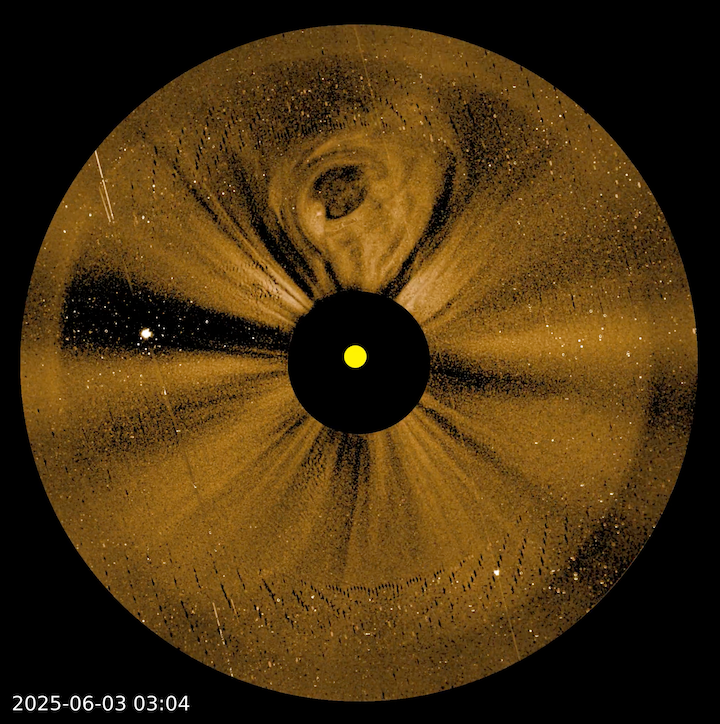
“These first images are astonishing, but the best is still yet to come,” said Craig DeForest, PUNCH principal investigator from Southwest Research Institute’s Solar System Science and Exploration Division in Boulder, Colorado. “Once the spacecraft are in their final formation, we’ll be able to routinely track space weather in 3D across the entire inner solar system.”
Throughout its two-year planned mission, PUNCH will make global, continuous, 3D observations of the Sun’s outer atmosphere and the inner solar system. This information will help scientists understand how material released from the solar atmosphere forms the solar wind. The mission will also provide scientists with new data about how potentially disruptive events from the Sun, like solar flares and CMEs, form and evolve. This information could lead to more accurate predictions about the arrival of space weather at Earth and how it impacts assets and explorers in space.
Southwest Research Institute, based in San Antonio, Texas, leads the PUNCH mission and operates the four spacecraft from its facilities in Boulder, Colorado. The mission is managed by the Explorers Program Office at NASA Goddard Space Flight Center in Greenbelt, Maryland, for the Science Mission Directorate at NASA Headquarters in Washington.
Quelle: NASA
----
Update: 15.08.2025
.
PUNCH (Polarimeter to Unify the Corona and Heliosphere)
NASA’s PUNCH Mission Reaches Science Orbit, Releases Data
All four spacecraft of NASA’s PUNCH (Polarimeter to Unify the Corona and Heliosphere) mission have successfully maneuvered into their final science orbits as of Aug 7.
Launched into Earth orbit on March 11, PUNCH’s four suitcase-sized spacecraft are now spread out along the planet’s day-night boundary, giving the mission a continuous, unobstructed view of the Sun and its surroundings. This allows the mission to study how the Sun’s outer atmosphere, or corona, turns into a constant outflow of material that travels across the solar system, called the solar wind.
“We want to measure the solar wind globally around the star in near real time,” said PUNCH’s principal investigator, Craig DeForest of the Southwest Research Institute in Boulder, Colorado. “The planet gets in the way from the point of view of any one spacecraft, so we had to spread them around the planet to look everywhere all at once.”
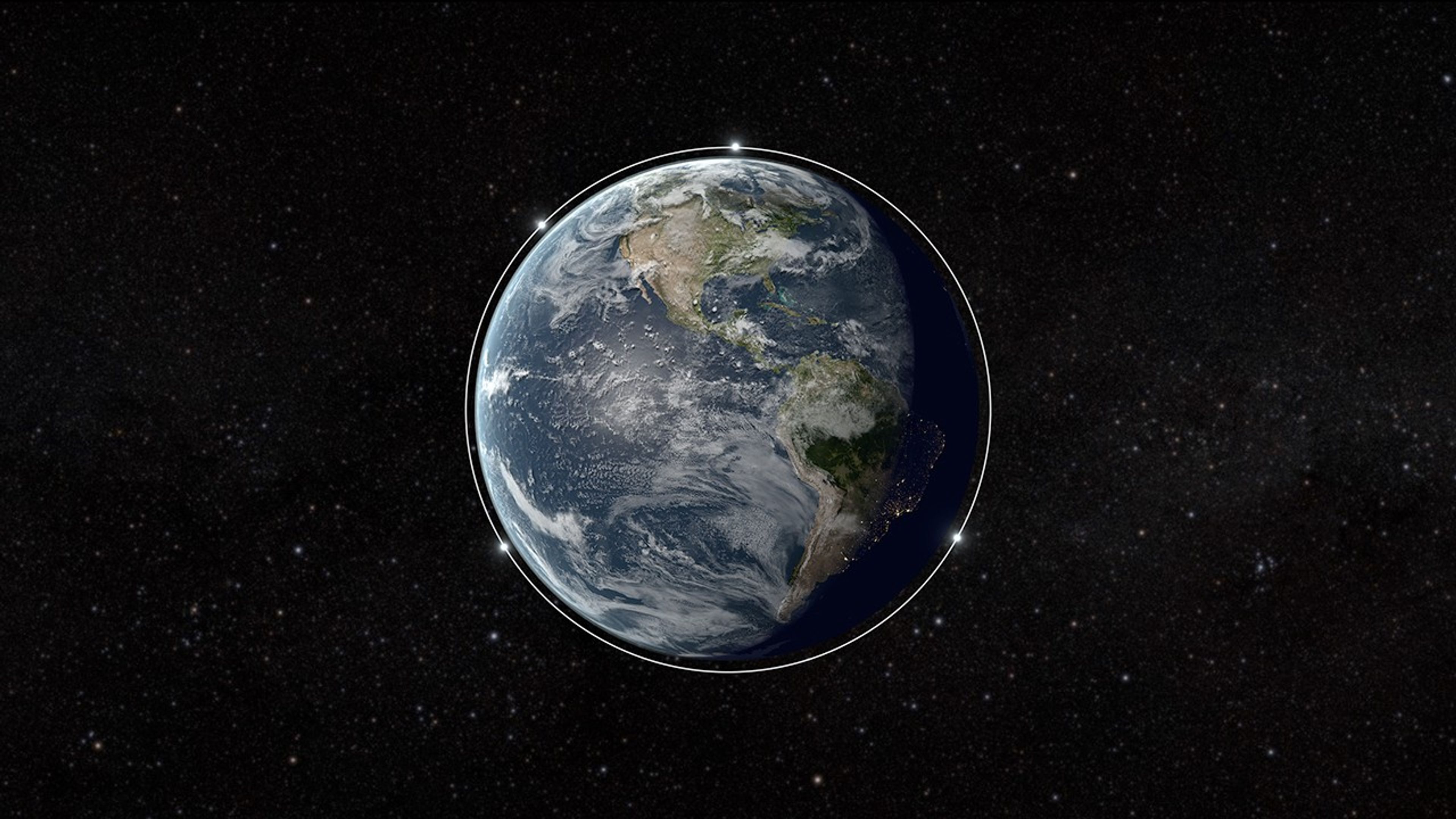
One of PUNCH’s spacecraft hosts a Narrow Field Imager, while the other three each carry a Wide Field Imager. The Narrow Field Imager is a coronagraph, which blocks out the bright light from the Sun to better reveal details in the Sun’s corona. The Wide Field Imagers capture images of the outermost portion of the solar corona and the solar wind in the inner solar system. The mission then combines these individual views into a wide-field mosaic that allows PUNCH to track space weather events from the Sun all the way to Earth.
This sprawling perspective from PUNCH complements observations from other heliophysics missions — such as NASA’s Parker Solar Probe, STEREO, SOHO, and CODEX along with the NASA/ESA (European Space Agency) Solar Orbiter mission — that examine the corona and solar wind at smaller scales and from different perspectives. Together, these missions provide a more complete picture of the corona and solar wind than we’ve ever had before.
“The PUNCH mission provides the global picture that we can combine with all those other missions to really understand this full, connected system between the Sun and the Earth,” said Nicholeen Viall, PUNCH mission scientist at NASA’s Goddard Space Flight Center in Greenbelt, Maryland.
In addition, PUNCH’s early combined views are now available publicly as “Level 2” science data. To bring out details in the faint corona and solar wind, the PUNCH images require multiple steps or “levels” of processing, from 0 (least processed) to 3 (fully processed). Level 2 data are nearly fully processed, and they stitch together images from the different spacecraft into a mosaic, as if they were taken by a single science instrument at the same time.
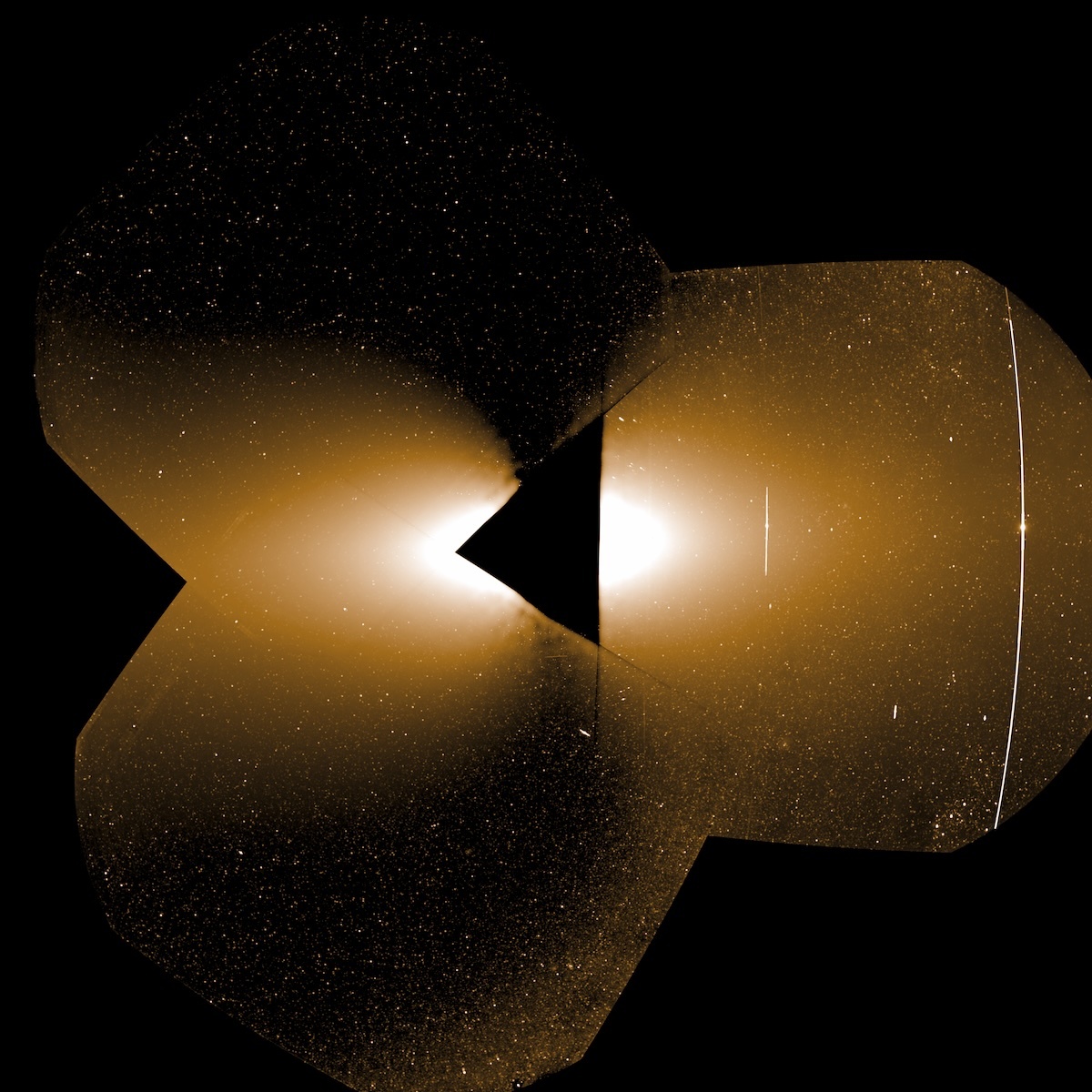
The processed PUNCH images are available for download from NASA’s Solar Data Analysis Center, and more information about the data is available at the Southwest Research Institute’s data access page.
Southwest Research Institute, based in San Antonio, leads the PUNCH mission and operates the four spacecraft from its facilities in Boulder, Colorado. The mission is managed by Space Science Mission Operations at NASA Goddard for the Science Mission Directorate at the agency’s headquarters in Washington.
By Vanessa Thomas
NASA’s Goddard Space Flight Center, Greenbelt, Md.
